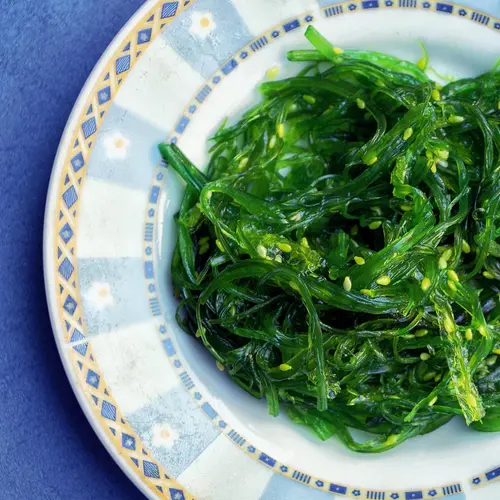Watercress is an aquatic vegetable that’s known for its zippy flavor. It’s found in many water sources from Europe to Asia, and has made its way into many types of cuisine. Watercress is considered an invasive species in the U.S., which means that eating it is not only good for your health, it’s good for the environment.
Health Benefits
The vitamins, minerals, and antioxidants in watercress can provide important health benefits. For example, it is rich in vitamin A—also known as retinol—which is important for keeping your retinas healthy and your vision good. Getting enough vitamin A is also crucial to keeping your organs healthy because it’s critical for cell division.
Watercress is also rich in vitamin C, which supports your immune system, helps you heal from injuries, and supports healthy collagen production.
In addition, watercress can provide other health benefits like:
Watercress is full of beta-carotene and other carotenoids, which are known for being potent antioxidants. Like most antioxidants, carotenoids have been linked to a reduction of free radicals in the body. This leads to less oxidative stress and a lower risk of cell damage, cancer, and other chronic illnesses, like arthritis.
Eating watercress can help support the health of your heart. Antioxidants (carotenoids in particular) have been linked to lower blood pressure, lower risk of heart disease, and even a lower risk of heart attacks and strokes. Early studies point towards another heart health benefit: watercress may help lower your cholesterol.
Finally, watercress is an excellent source of three minerals that are important for healthy bones: calcium, potassium, and magnesium. Calcium is the most common mineral in your body. If you don’t get enough, you may slowly weaken your bones over time, leading to osteoporosis.
Magnesium and potassium indirectly impact skeletal health by affecting the growth of bone cells. Consuming enough of these minerals can help reduce the risk of complications from osteoporosis and aging.
Nutrition
Watercress is rich in potassium, which is one of the most important minerals in your body. Potassium helps your body regulate your heartbeat, salt levels, blood pressure, and even the health of your bones.
Watercress is also an excellent source of:
Nutrients per Serving
A half-cup serving of watercress contains:
- Calories: 2
- Protein: Less than 1 gram
- Fat: Less than 1 gram
- Carbohydrates: 1 gram
- Fiber: Less than 1 gram
- Sugar: Less than 1 gram
Things to Watch Out For
Watercress is rich in vitamin K. For many people, this is perfectly fine. However, people who are on the blood-thinning medication Warfarin should take care with how much watercress they eat. To function effectively, Warfarin relies on your body having a relatively constant amount of vitamin K. Suddenly adding a significant source of the vitamin could cause complications with the medication.
Watercress is also high in nitrates, which can be converted to nitrites if exposed to bacteria. Nitrites have been linked to an increased risk of stomach cancer. Juice or smoothies that contain watercress should be consumed immediately or refrigerated and consumed within a day to avoid the chance of bacterial contamination.
How to Eat Watercress
Watercress is often found in supermarkets and health food stores around the country. Because it’s an aquatic vegetable, you can find fresh watercress more frequently in the warmer months, usually from April to September. It’s a light, crunchy leaf that tastes peppery and bright. This makes it a perfect choice for salads, juices, soups, and more.
Here are some ways you can include watercress in your diet:
- Toss watercress into any salad.
- Try watercress soup.
- Saute watercress with ginger as a flavorful side dish.
- Add watercress to a sandwich.
- Include watercress in stir-fries.
- Blend watercress with fruits and vegetables into a green smoothie.

